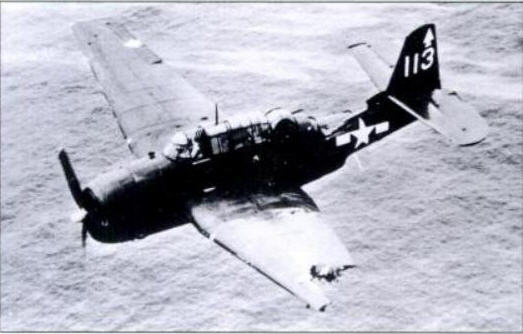I've read a lot of military history, and I still come across things that, while possible in AH, I previously thought were impossible in real WWII planes -- yet amazingly did happened in WWII.
For example, it's possible in some AH planes to stay in the air with half a wing missing, but I figured it was probably not possible in a real WWII airplane. Then I saw this in TBF/TBM Avenger units of World War 2, by Barret Tillman (great book) -- a TBM making it back towards its carrier:

The other day, I ran across another such item. In AH, it is possible for a plane to take off from a CV while it is turning. I figured that was an example of something that likely could not be done in a real WWII aircraft. Then in Intrepid, by White and Gandt, I ran across this passage.
Paraphrasing the lead in to the story: Charlie Mallory was a Hellcat pilot on Intrepid. On one mission, when he was to take off with his squadron, his engine developed problems during his run up, and he got pulled off the launch. He hurried down to the hangar deck to get in the ready spare for his squadron, but after he got strapped in and was ready to go up on the elevator, kamikazes started to come in. Intrepid's crew of course started to focus on that -- and this is where we pick up the tale.
"Raise the damned elevator!" Charlie Mallory yelled over the noise of his idling engine.
No one on the hangar deck seemed interested in getting Mallory's Hellcat lifted up to the flight deck. The chief petty officer standing on Mallory's wing just shook his head and climbed down. Finally Mallory got another petty officer's attention and motioned that he wanted to go topside. The petty officer nodded, then he too walked away.
Mallory stewed in his cockpit. The sound of the anti-aircraft guns topside ws increasing in intensity. Then he felt the deck tilting as the carrier heeled over in a hard turn. Through the open hangar bay door he could see the other ships in Intrepid's formation. Their guns were all firing. The sky was filled with roiling black puffs of anti-aircraft fire.
Then he felt the elevator move. Finally, he was going up. Mallory tightened his straps and checked his switches. When the elevator reached the flight deck, Malory gazed around and saw that the deck was mostly empty. The strike aircraft had all been launched. No one was paying any attention to him because they were pre-occupied with incoming kamikazes. Even the launch officer was gone.
Mallory saw that from his position he had a clear run down the deck. He considered his options for a moment, then made up his mind. He shoved the throttle up, and the Hellcat headed down the flight deck.
The problem was that the deck was heeling over at a severe angle becasue the ship was in a hard turn to starboard. he had to stomp hard on the right rudder to keep the fighter aimed for the bow, which was swinging to the right.
He almost made it to the bow. Skidding and skittering, clawing for speed, the Hellcat drifted toward the left edge of the deck. Seventy feet short of the bow, praying that he had enough airspeed, he yanked the fighter into the air. The Hellcat sailed out over the left deck edge, hovered a few precarious seconds over the open water -- then flew away.
Few on Intrepid's deck noticed the unauthorized launch. Nor did they care. Every pair of eyes was now focused aft, on the two dark objects bearing down on Intrepid's stern.
[Moments later]
. . . The Zero and its 550-pound bomb smashed into Intrepid's flight deck behind the island, between number two and three elevators. A plume of smoke and fire erupted from the deck. The explosion pierced the flight deck, penetrated the gallery deck beneath, then spewed flame and shrapnel into the hangar deck below.